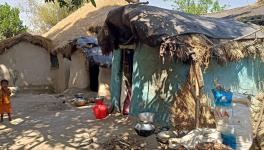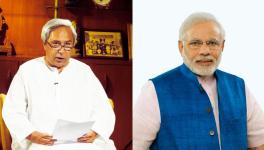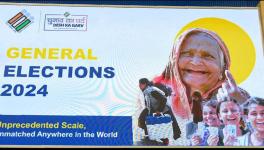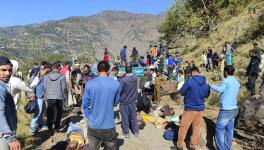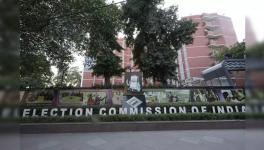Is India Trying to Underplay the Bloodshed Committed in Kashmir to Cover Its Failures?
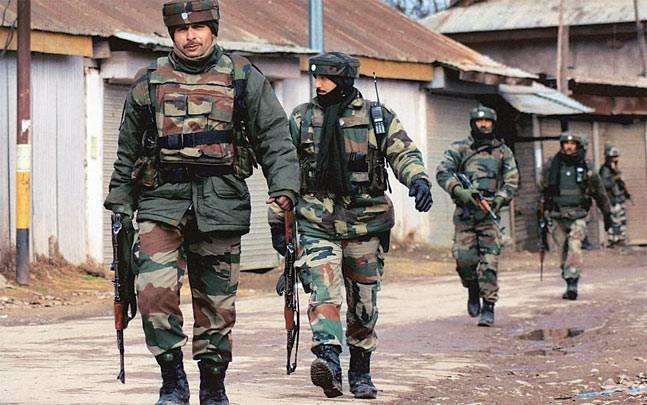
Image Courtesy: India Today
While the world has fixed its attention on the rape and murder of an eight-year-old Bakarwal girl from Jammu, nobody seems to care about the hundreds of Kashmiris killed last year. The annual report released by the Ministry of Home Affairs (MHA) on Wednesday has revealed startling number of killings that took place in the year 2017, in the state.
According to the report, in 2017, there were 342 violent incidents in Jammu and Kashmir, in which 80 armed personnel, 40 civilians and 213 militants were killed. The report stated, “The year 2017 also witnessed a 6.21 per cent increase and 166.66 per cent increase in the number of terrorists incidents and fatalities of civilians respectively in comparison to the corresponding period of 2016."
The report stated that the central government is working alongside the state government and has adopted multi-pronged approach to contain the cross-border infiltrations. The figures in the MHA 2017-18 annual report are, however, in conflict with the Annual Human Rights Review 2017, released by Jammu and Kashmir Coalition of Civil Society (JKCCS).
The report by JKCCS reports deaths of as many as 451 persons, including 125 armed forces, 217 militants, 108 civilians and one ikhwani, in the conflict. The report by JKCSS ruptures the government’s claim that the Kashmir's insurgency movement is “under control” and that they have wiped out all the militants from the valley.
If JKCSS report is to be believed, 2017 has recorded the highest number of civilian killings at encounter sites with 'at least 19 civilians being shot dead by the armed forces at different encounters in the valley, including five women shot dead by the armed forces.'
The figures reveal that the PDP-BJP dispensation (incumbent government) has brought Kashmir to a point, where death and injuries continue to dominate the state’s landscape. The killings of civilians recorded by JKCSS is double the number of killings revealed by MHA.
Is the government trying to underplay the bloodshed and atrocities committed on the civilians to cover up its failure?
Post Burhan Wani killing in July 2016, Kashmir had witnessed an unprecedented civilian uprising revamping the whole discourse of militancy. The young slain Hizbul commander had become the symbol of the fight against “Indian occupation”. While the killing of Burhan was presented by India as threat to the 'militancy', the number of homegrown militants have swelled post July 2016.
It’s noteworthy that killings of the civilians have increased after the launch of the ‘Operation All Out’. This project was launched by the government in May 2017, with an aim to wipe out militants from Kashmir. Officials had also claimed that the operation will help bring back normalcy to the valley, but it doesn't seem to be the case. Since its launch on May 26, 2017 alone, eight civilians were killed by the security forces during Lok Sabha bypolls in the state. An incident, where a civilian was used as a 'human shield', was also witnessed.
In December, 2017, Union Minister of State for Home Hansraj Gangaram Ahir had written to Lok Sabha regarding the civilians; killings in Kashmir. The minister said that 37 civilians were killed till December 10, 2017, 15 were killed in the calendar year 2016, 17 in 2015 and 28 in 2014 – pointing towards the upward surge in the death of the civilians.
Over-ground workers
On Feburary 15, 2017, Army Chief Bipin Rawat said that civilians obstructing military operations would be dealt with as over-ground workers (OGWs) and will be dealt with harshly. Also, OGWs meet the same fate as that of a militant – either arrested or killed, while there is no accountability. Lately, many killings of the civilians have been justified by labelling them as the OGWs. The recent killing of Burhan Wani's brother Muhammad Khalid Wani was defended by the Army. He was called an OGW, and not a civilian.
Recently, In March 2018, the army justified the alleged killings of civilians in Shopian by terming them as OGWs. Demanding an investigation into the incident, NC’s official spokesperson said, “The Shopian killings cannot be justified with an arbitrary, unproven pronouncement of the youth being OGWs. The circumstances and details should be probed and made public by the state government.”
Stone Pelting, pellet guns and dissent:
The use of lethal pellet guns to quell stone pelters has caused enormous damage to the Kashmiri youth. Almost 4,799 incidents of stone pelting were reported in Jammu and Kashmir in 2015-17, in which 17 protesters and two security personnel were killed. Out of the total number, 730 stone pelting incidents took place in 2015; 2,808 incidents in 2016 and 1,261 stone pelting incidents were reported in 2017.
In April 2017, it was reported that almost 14 per cent of pellet gun victims are below the age of 15. As per JKCCS report, 41 Kashmiris have received eye injuries during pellet firing by armed forces in 2017. Out of which, six have suffered injuries in both the eyes and 35 have suffered injury in one eye. Four people have died after being hit by a pellet. Almost all of them fall in the age group 15-20 years.
The killing of Tufail Matoo, a young Kashmiri boy has become a constant reminder of the killings in Kashmiri. The 17-year old boy died after being hit in the head by a tear gas shell. It has been seven years and there has been no justice.
Surgical Strike and its aftermath:
On 29 September 2016, Prime Minister Narendra Modi declared that India had carried out a surgical strike on the militant camps in Pakistan-Occupied Kashmir (POK), eleven days after the Uri attack. The surgical strike was touted as a 'frontal fight against terrorism' by the BJP government. It was also to threaten Pakistan, so there are less terrorist infiltrations.
However, as per the figures emerged from the Indiaspend analysis of the data from the South Asian Terrorism Portal, one year after the Indian Army conducted surgical strikes, there has been 31 per cent increase in deaths due to ‘terrorist-related incidents’ in Jammu and Kashmir, indicating that the ‘terrorist activities’ in the valley and infiltration is on rise.
Get the latest reports & analysis with people's perspective on Protests, movements & deep analytical videos, discussions of the current affairs in your Telegram app. Subscribe to NewsClick's Telegram channel & get Real-Time updates on stories, as they get published on our website.











